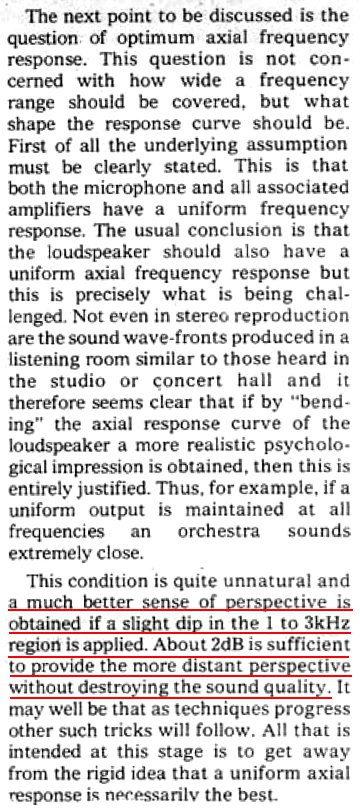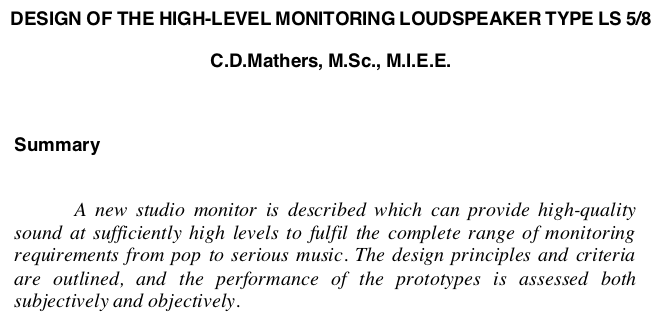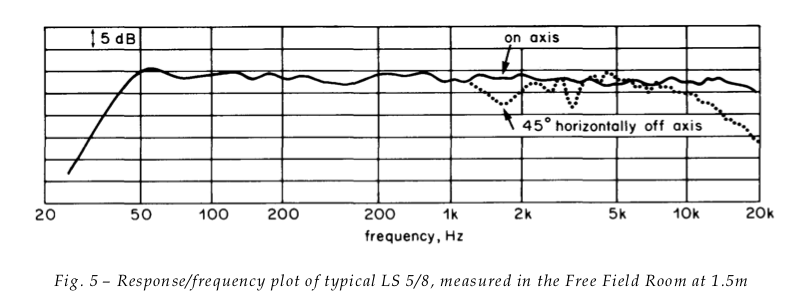ToTo Man
the band not the dog
There aspects of performance that affect "soundstage" which can be measured.
The aforementioned BBC dip is one of them – by artificialy exaggerationg or attenuating the presence region the phanton sources appear subjectively closer or more distant –, another is dispersion width and smoothness and the way it interacts with the room boundaries, etc.
But as mentioned by @h.g. the "soundstage effect" is significantly affected/enhanced by the acoustic properties and topographic characteristics of the room.
And because sharper image focus is achieved by toe-ing the speakers towards the listener, "imaging" and "soundstageing" tend not to go well together.
Just to make clear what I mean by "imaging" and "soundstage" (from Stereophile's Glossary):
imaging The measure of a system's ability to float stable and specific phantom images, reproducing the original sizes and locations of the instruments across the soundstage. See "stereo imaging."
stereo imaging The production of stable, specific phantom images of correct localization and width. See "soundstaging," "vagueness," "wander."
soundstaging, soundstage presentation The accuracy with which a reproducing system conveys audible information about the size, shape, and acoustical characteristics of the original recording space and the placement of the performers within it.
I believe dispersion must play a key role but wonder if crossover design is also of significant influence? It was a long time ago when I compared IMF Professional Monitor mk3 and IMF Professional Monitor mk4, two models that share identical drive units, similar enclosures (mk4 has more internal damping than mk3), but different crossovers (same XO frequencies but much higher component count on the mk4 crossover). The mk4 produced an image that was crisp and transparent but it seemed small/narrow and sounded like it was coming from the location of the enclosures with not much sound filling the spaces to each side or between. Whereas the mk3 produced an image that was slightly less transparent and more diffuse, but it filled the spaces to each side and between much more convincingly. Since both models used identical drivers and similar enclosures, one would expect dispersion to be extremely similar if not identical. I was therefore puzzled by the difference.




